Showing 13–24 of 129 results
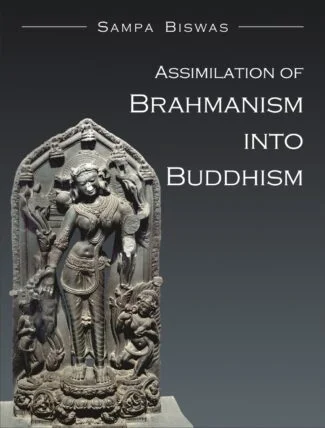
It has its focus on Buddhism and Buddhist art of early medieval period in India. The introduction of Tantrism bought Buddhism and Brahmanism closer to each other, both in enmity and similarity. It opened the gate to the vast field of Buddhist iconography, Tantric practices, deities, mudras and mandalas.
Assimilation of Brahmanism into Buddhism is a research work on Buddhism and Buddhist art of early medieval period in India. Archaeological materials and literary records suggest that Buddhism had a continuous existence during the third century bce to the thirteenth century ce in India. Though early Buddhism was totally different in its doctrines and faith from the Brahmanical system, the Buddhism of today is a religio-philosophical system having assimilated and adopted new ideas and beliefs from the environment in which it was born and nurtured.
The introduction of Tantrism bought Buddhism and Brahmanism closer to each other. It opened the gate to the vast field of Buddhist iconography along with Tantric practices, deities, mudras and mandalas. Many of these were influenced by the Brahmanic idea of godhead and some were the combination of one or more ideas of Brahmanic divinities. There was assimilation of a number of factors between Brahmanism and Buddhism.
This scholarly volume addresses the different aspects of this assimilation process by getting into a historical study of Hinayana and Mahayana Buddhism; outlining the political history, and socio-economic and religious changes during 300700 ce; scanning the political and economic background and the spreading of esoteric Buddhism; emergence of Vajrayana Buddhism; and providing a detailed sketch of Vajrayana images.
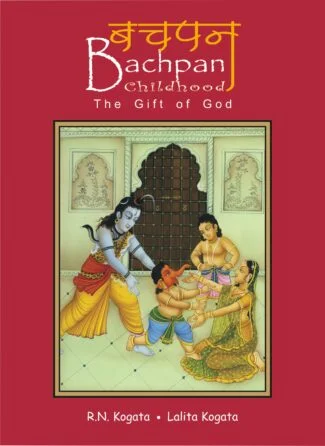
This book is a small attempt to express the love, affection and feelings towards children. Through pleasing illustrations, the authors have touched upon the various facets in the life of a child. Delightful verses add sweetness and charm to the book.
In the life of a human being the most sweet and memorable part is its childhood, say from its second year till its seventh or eighth. During this time the child is very innocent, full of life, playful, has no responsibility or worry, and when in fear or pain it calls its mother and she is there ever ready to protect it. It understands no restriction and has freedom to go and talk to anybody in the house. It does not know how to hate anyone — in fact, it is like the manifestation of the ever-gracious divinity in the world. A child is loved, respected and even adored.
This book is a small attempt to express the love, affection and feelings towards children. In Hindu pantheon the only divine family having children is that of Shiva and Parvati or Uma. Through pleasing illustrations, another made-for-each-other couple — the Kogatas — have touched upon the various facets in the life of the divine chidren — Ganesha and Karttikeya — together with their doting parents. The delightful verses add sweetness and charm to the book.
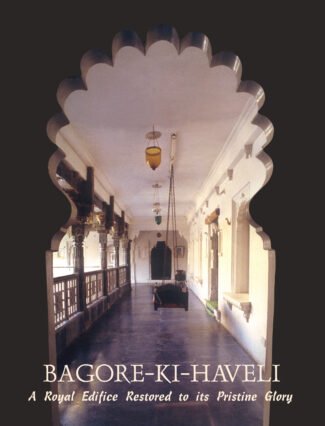
The work takes us on a journey through the famous Bagore-ki-Haveli, which typifies the best of Mewari architecture, to show us the splendour and magnificence of a Rajasthani royal household. With many colour photographs, it reconstructs the royal lifestyle and practices its customs, religious undertakings and costumes, and discusses the artistic beauty of the haveli.
Rajasthan boasts of many beautiful monuments and structures of the royalty which stand as evidence to Indias glorious ancient culture and heritage. The Bagore-ki-Haveli is one such edifice. The book takes us through the architectural wonders of the haveli to reflect what it had been the royal household of Maharaj of Bagore. With many splendid colour photographs of its impressive rooms, large balconies, wide terraces and attractive, leafy courtyards, it reconstructs the royal household and its functioning, customs and religious practices, costumes and ornaments, and arts and entertainment. It captures the artistic brilliance of the exquisite glass inlay work and paintings in the restored haveli including a gallery of Madhurastakam paintings describing the loveliness of Sri Krishna and his divine lover, Radha. The work highlights the charming style of the haveli that typifies the best of Mewari architecture but has a unique character of its own. The book, a visual delight presenting a glimpse into the royal lifestyle and splendour of the time, will be invaluable to historians studying the history, art and architecture of north India in the centuries before Indias independence and will also interest readers in general as well as tourists.
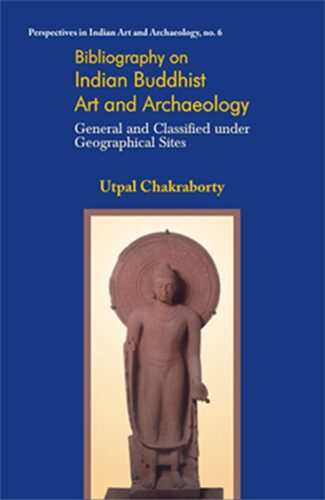
The bibliography includes 4081 entries, covering published materials in English and French languages over the last two centuries. The book gives a representative overview of what has been researched and accomplished in the field of Indian Buddhist Art and Archaeology since Wilkinss article on Bodh-Gaya in 1788 or Thomas Daniel’s first illustration on the Kanheri caves in 1798.
The bibliography includes 4081 entries, covering published materials in English and French languages over the last two centuries. It is divided into two parts. The first part contains 2410 entries dealing with Indian Buddhist art and archaeology and Indian art in general, history, religion, some Buddhist sites outside present India with special attention given to Pakistan , etc. Entries in the second part are exclusively devoted to Indian Buddhist sites. There are 57 sites; each one is individually studied. The book gives a representative overview of what has been researched and accomplished in the field of Indian Buddhist Art and Archaeology since Wilkins’s article on Bodh-Gaya in 1788 or Thomas Daniel’s first illustration on the Kanheri caves in 1798.
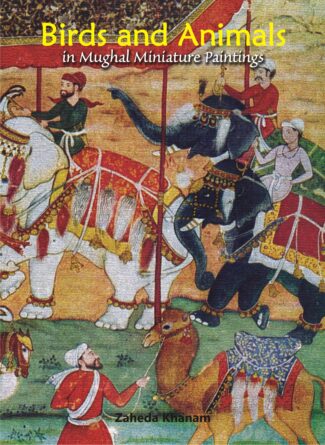
This book is a survey of the birds and animals used in Mughal paintings, especially during the reigns of Emperors Akbar and Jahangir. It deals with the different perspectives of the two rulers in preserving for posterity the birds and animals found in their times.
The depiction of flora and fauna has been an intrinsic part of Indian painting traditions. The Mughals in their turn, in their fascinating paintings, used the bird and animal imagery to lend a special quality to their art of painting. This book, with over 70 illustrations, is a survey of the birds and animals used in Mughal paintings, especially during the reigns of Emperors Akbar and Jahangir. With historical details, it shows that the depiction of various kinds of birds and animals played a significant role in conformity with the context or the demands of the narratives. The artists painted both wild and domestic animals with equal competence. Outlining the differences in the paintings under the Mughal rulers themselves with regard to depiction of fauna, it notes that while Akbar was interested in historical, mythological or anecdotal events, Jahangir introduced album paintings and evinced interest in individual portrait studies of fauna. In all, it showcases the meticulous depiction of fauna in Mughal art and its persevering beauty. It mentions the names of a host of artists who executed the paintings and the many illustrated manuscripts mythological, historical and on popular fables that saw lavish use of paintings with faunal imagery. The book will interest historians especially those studying art history of the medieval period.
Borobudur was constructed during the eighth century as a guide to the Noble Path of the Buddha. Born from silence and unfolding into the serenity of the other shore, it expresses the glory of Indonesia’s awareness and creativity, the smile of her plastic forms over the centuries as well as her travels along the edge of thoughts that cross the endless corridors of memory. Though the Western world rediscovered this magnificent structure almost 200 years ago, this sacred place nonetheless remains seated in its enigmatic depth, engulfed in vaporous illusions, waiting for someone to find the base simplicity of its Truth. This book is a catalyst and invites adventurous minds to find new directions by bringing into focus the vast universe of the Borobudur in order to cultivate the Way to weeding out error. The questions posed or solutions offered herein are like water and waves: different yet identical in essence. They stir discussion. One of the special contributions of this book lies in its correlating the cyclical movements of the Sun and Moon with the numerical symbolism of Borobudur. The authors cite the magical effect of the Sun suddenly appearing out of the volcano Merapi and empowering the Borobudur-mountain with its radiant energy in poetic imagery. This magic moment of satori or enlightenment echoes the experiences of the unknown Shailendra monarch who had commissioned the monument’s construction and the inspiration that made the architect envision this Buddhist wonder.
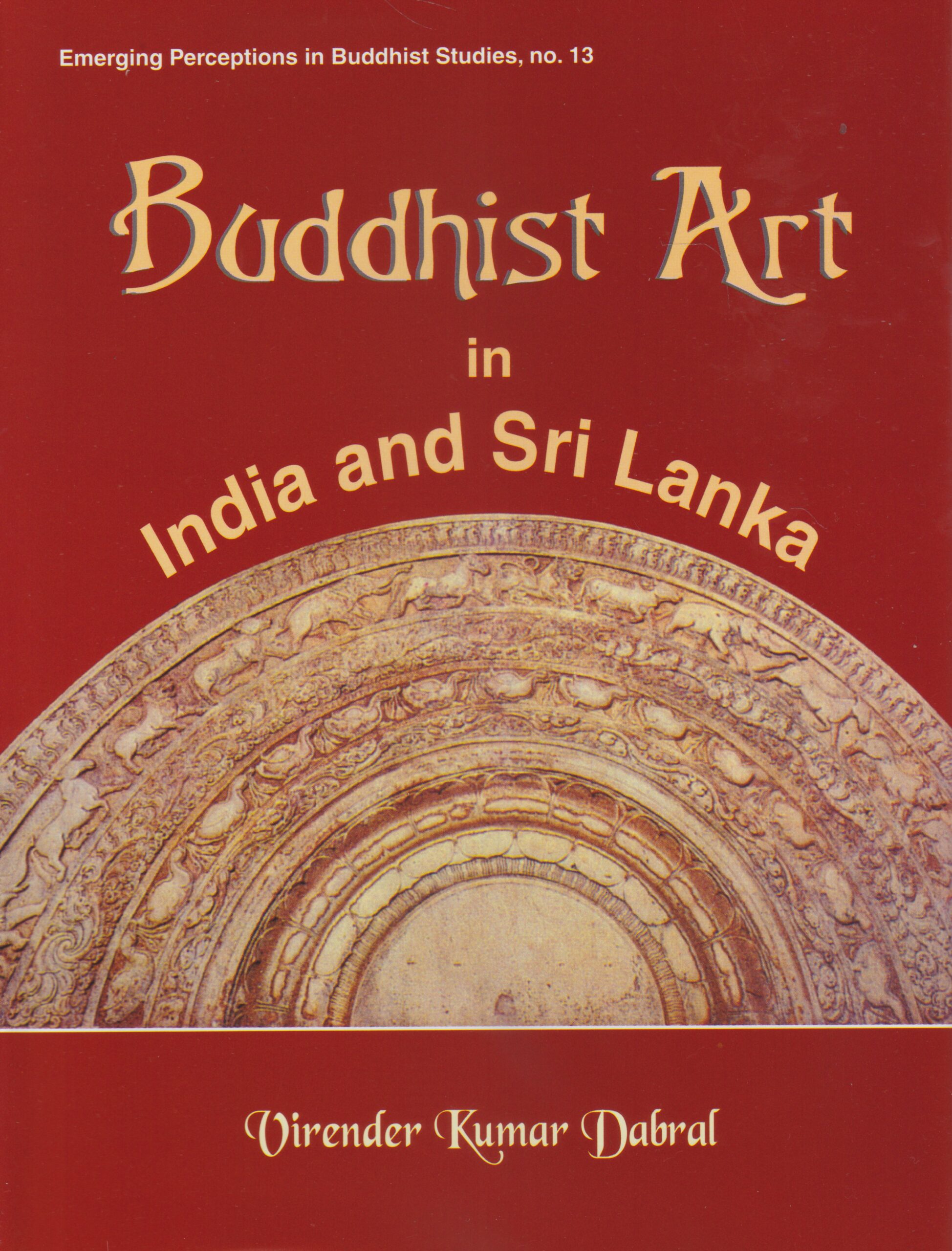
The book is a comprehensive study of the evolution and development of Buddhist visual art in India and Sri Lanka, taking into consideration their diverse forms and the impact of regional trends on them. It examines architecture, sculpture, painting, and use of symbols like the lotus and Sri Lanka devil masks.
The book is a comprehensive study of the evolution and development of Buddhist visual art in India and Sri Lanka, taking into consideration their diverse forms and the impact of regional trends on them. Consulting a number of original sources including scholarly works in the Sinhala language, Dr. Dabral highlights the salient features of ancient Buddhist art in the two countries with special attention to architecture, sculpture, painting, use of symbols like the lotus and Sri Lanka devil masks. Dr. Dabral emphasises how Sri Lankan Buddhist art though originally derived from Indian art, developed its own art forms on the basis of local conditions. The critical study evaluates Buddhist art under various rulers/empires such as the Mauryan empire, the Kushanas, the Nagas and the Guptas. With numerous plates and an extensive bibliography, it gives insights into important aspects like the architectural excellence of stupas and viharas, the Sigiriya frescoes, Ajanta and Bagh paintings, Mathura, Gandhara and Sarnath schools of art, and the Jatakas as reflected in carvings at Sanci, Amaravati and other places.
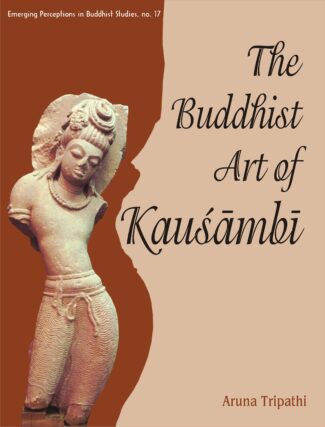
The book highlights the art treasures of Kosambi, a famous ancient centre of Buddhist art, through a study of over 300 stone sculptures, paying special attention to their iconographic features, the stone types, carving, grinding and polishing techniques and their aesthetic appeal. It discusses the uniqueness of Kosambi art as compared to Mathura and Sarnath schools.
The Upanishads capture the quintessence of Indian spiritual wisdom unfolding deepest, highly perceptive reflections on human existence and how it is related to the mysterious cosmos. Authored by enlightened seers over the period of 1500-200 bc., the Upanishadic message is a magnificent vision that raises human consciousness to sublime heights. One of the major centres of Buddhist art in ancient times, Kausambi provides evidence of an uninterrupted art tradition spanning centuries. Pointing to the scant attention Kausambi has received from scholars in the past, this work attempts to highlight its art treasures through a study of its stone sculptures. Based on scrutiny of stone sculptures found at various sites in Kausambi and its vicinity and housed in different museums, it presents perhaps the first extensive documentation of the Buddhist art of the region from the Mauryan to post-Gupta period. It examines in detail over 300 stone sculptures, paying special attention to their iconographic features, types of stone, techniques of carving, grinding and polishing and their aesthetic appeal. All this comes with a background throwing light on the history of Kausambi and its association with Buddhism, the early archaeological explorations in the region, and the individuality and uniqueness of Kausambi art as compared to Mathura and Sarnath schools. The book presents over 225 black-and-white and over 50 coloured photographs of Buddhist sculptures which are neatly classified and systematically analysed. It would prove invaluable to scholars and students of Buddhist art.
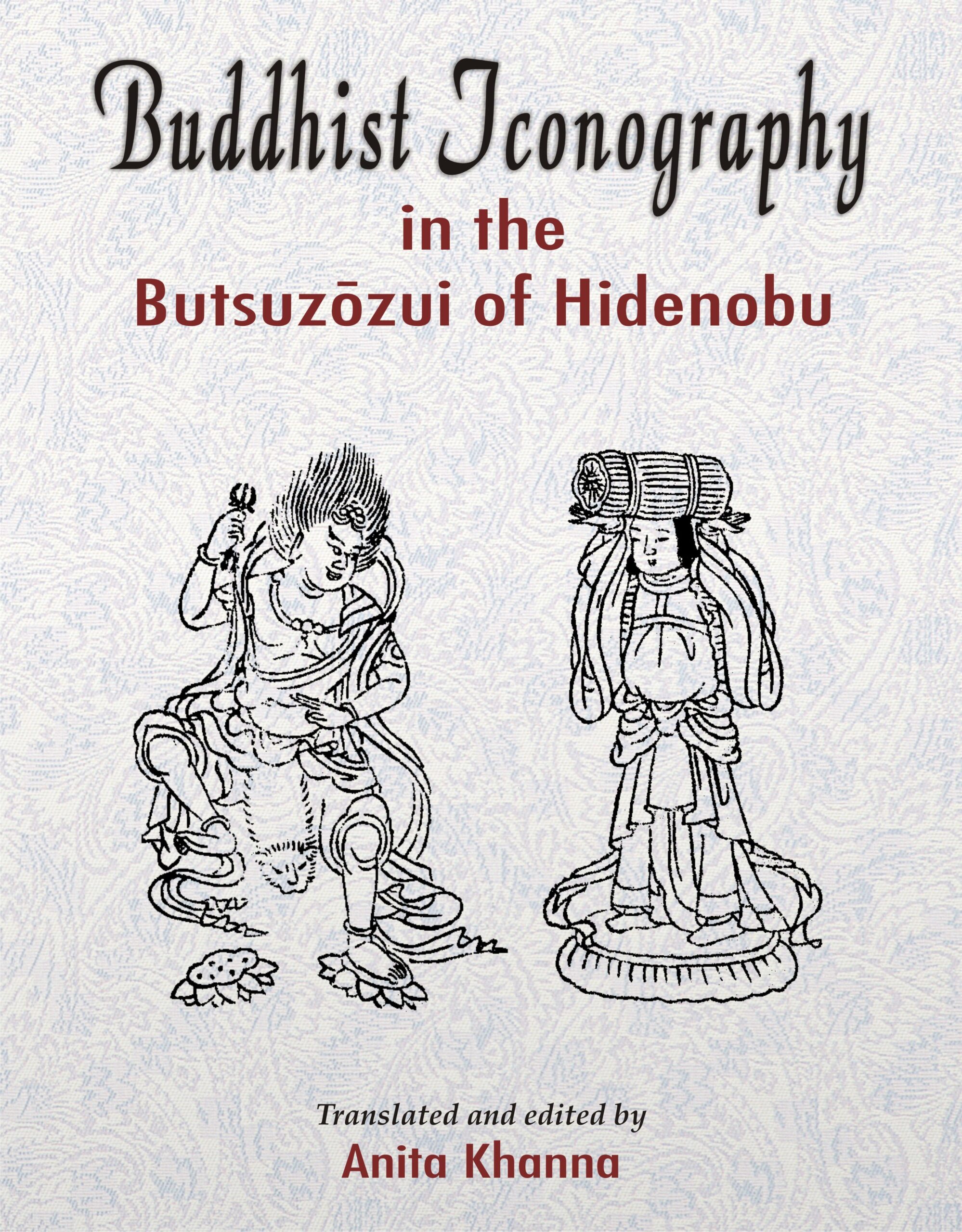
The book presents the Buddhist iconography as depicted in the Butsuzo-zui Buddhism adapted in Japan with the collections of icons divided into five parts. It introduces the amalgamation of Buddhist and the native Shinto deities, a unique feature of Japanese Buddhism.
The volume presents the Buddhist iconography of Japan as depicted in the Butsuzozui, a collection of iconographic sketches of various Buddhas that falls under the genre of Zuzo collections of iconic drawings in black and white. Inspired by the Chinese style of paintings called Paihuo or Hakubyo, the over 800 sketches presented here bear reference to the landmark work of this genre compiled in ce 1175 under the title of Besson Zakki and are arranged on the basis of the treatise of the Shingon sect of Buddhism. Butsuzozui presents Buddhism as it has been adapted in Japan, with the collections of Buddhist icons divided into five parts. It contains the list of sources, especially the scriptures. It deals with the Chinese icons of Fudaishi and his sons Þ the laughing Buddhas; sketches on the birth of the historical Buddha, his search, sambodhi and parinirvana; the nine categories of Amida and the classification of the Seven Buddhas of healing (Shichi Yakubutsu). It introduces the amalgamation of Buddhist and the native Shinto deities, a unique feature of Japanese Buddhism. The sections that follow expand the list of the protector gods associated with the Japanese beliefs and the different historical personalities associated with the various sects of Buddhism in Japan.
The volume will interest scholars of Buddhist religion and art.

It deals with the development and fundamental aspects of Buddhist Tantrism and its impact on paintings and the sculptural art of India. It discusses concepts and schools of Tantrism citing Buddhist Tantric works.
In (perhaps) secret defiance of the rigid prescriptive codes of the Buddhist monastic order cropped up a new, esoteric cultic phenomenon. Which, later known as Buddhist tantra, not just compromised Shakyamunis ethical legacy, but came to be administered by a whole host of mudras, mandalas, kriyas, caryas and mysteriously ritualistic elements, even hedonistic practices. Dr. Mishras book attempts afresh to investigate when, why and how emerged this secrecy-ridden cult: now a spiritual tradition in its own right. The author, who has had long, personal interactions with some of the living tantriks, here enters the dark alleys of Buddhist tantra to look for its nucleus, its evolution, its culmination, and the causes of its disintegration. Focussing, further, on the shifting philosophical tenets of Buddhism: from Hinayana to Mahayana, Vajrayana, Kalacakrayana and, finally, Sahajayana, Dr. Mishra spells out quintessentially the world-view of Buddhist Tantra and its path to nirvana or sukhavati: the abode of bliss, together with a wide range of tàntric concepts that remain guhya (secret) to the uninitiated. Also showing how Buddhist art, almost from the beginning, has been compellingly influenced by tantric practices, the book exemplifies the manifestations of this influence in the iconographic representations of the Buddhist deities, illustrated manuscripts, thangkas, and even in the use of colours by the Buddhist artists.
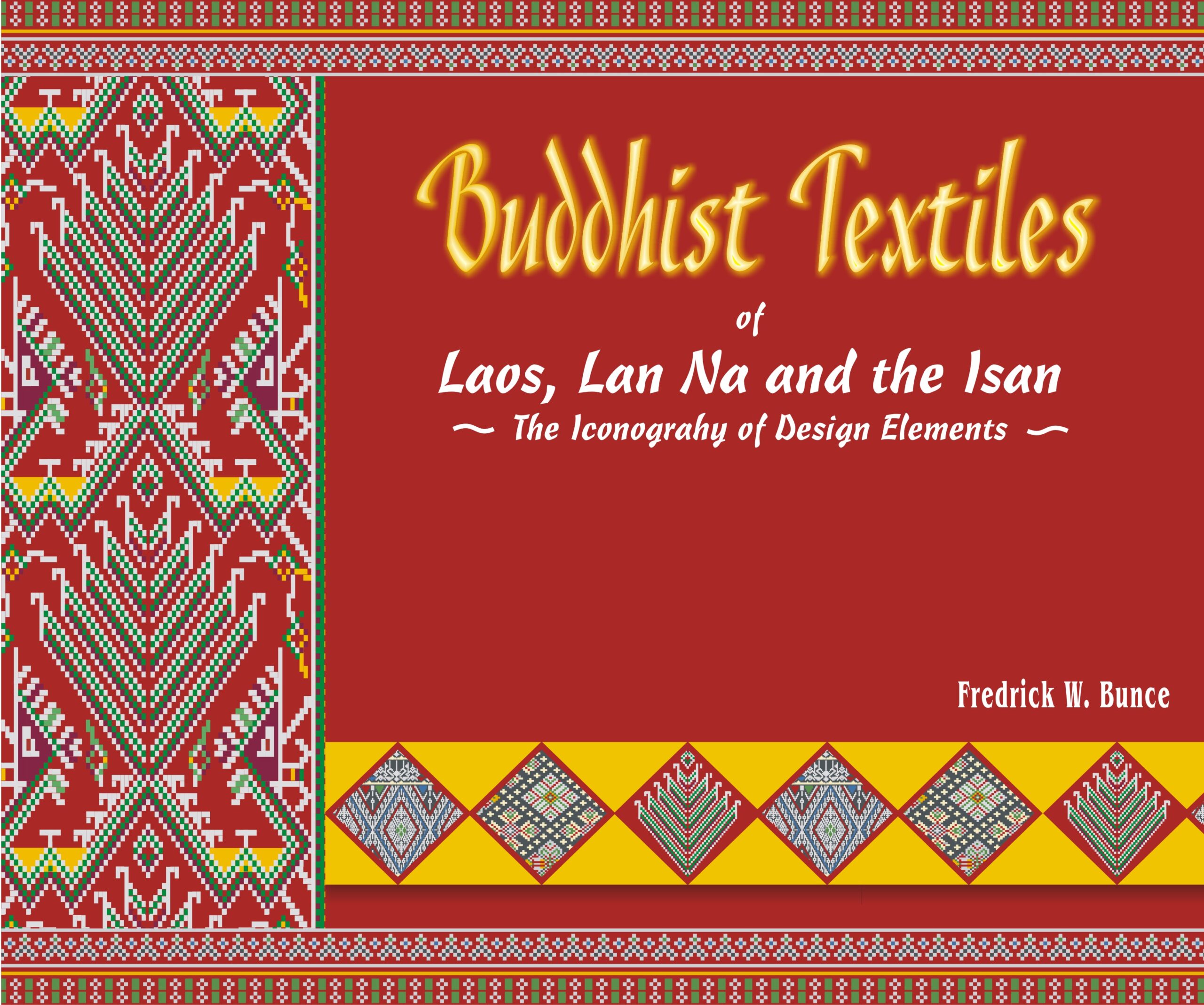
This book studies the iconography of the design elements typically employed by craftspersons of Tai textiles from the Laos, Lan Na and Isan areas. With numerous splendid illustrations of the designs, it deals with their art of weaving, various textile forms to be found in the region and the suitable and inherently powerful motifs woven.
Textiles from Laos, Lan Na and the Isan are prized for their artistic brilliance and aesthetic beauty. They speak volumes on a weaving tradition that has evolved through centuries and shaped the socio-cultural life of the people associated with it. This book studies the iconography of the design elements typically employed by craftspersons of textiles from these areas: it deals with their art of weaving, various textile forms to be found in the region and the suitable and inherently powerful motifs woven. With numerous splendid illustrations of the designs, it involves study of design elements on articles of daily use as well as those used for ceremonial purposes and the kind of forms and iconography depicted like ancestor figures, animal and plant forms, water creatures, objects used in ceremonies and geometric forms. Viewing Buddhism as the prime influence upon the objects though Hinduism is also an important referent, it explores the symbols the design elements involve and their many meanings and the dimensions they encompass their fertility-related, religious and universal associations, for instance. The designs considered in the study are based upon the square grid and the design elements are shown in the typical graph form employed by weavers. It also gives Indian (Sanskrit) and Thai equivalents for English terms of plant and animal species and clarifies a number of terms all of which make this painstakingly-conducted research a thorough work on the subject. The book will be very useful to scholars of Textile designs, Buddhist art and culture; and the cultural traditions of South-east Asia. The scholars of Buddhist studies, specially of Buddhist tantra and art, will find the book as both interesting and useful.

The book studies various aspects of the bull as reflected in Indian art and literature up to the sixth century ad from its domestication and migration and philosophical tenets associated with it to its relation to the fertility cult and significance attached to its physical form and psychological characteristics.
The work deals with various aspects of the bull as reflected in Indian art and literature up to the sixth century ad. Perhaps the first effort to showcase the representation of the bull in ancient India, it examines the bulls domestication and migration, the Indian type of bulls, and the philosophical tenets associated with it and studies the importance attached to the bulls physical form and its psychological characteristics, its relation to the fertility cult and its usefulness as a domesticated animal as reflected in ancient Indian art. It looks into the manner in which its significance was reinforced through art and the animal protected by associating it with religion Hindu, Buddhist, Jaina and folk. Dr. Bhogendra Jha goes in-depth into the mode of revering the bull in stone, clay, metal and colours through modelling, moulding and painting: its depiction in coins, seals and sealings, and terracottas, with reference to different historical and dynastic periods. He includes depiction of the bull in prehistoric art and its description in writings, and also compares the position of the bull in ancient world cultures of Egypt, Crete and Mesopotamia, for instance with its position in ancient India to broaden the scope of the study. The book will be useful for researchers beginners and established scholars of early Indian art.